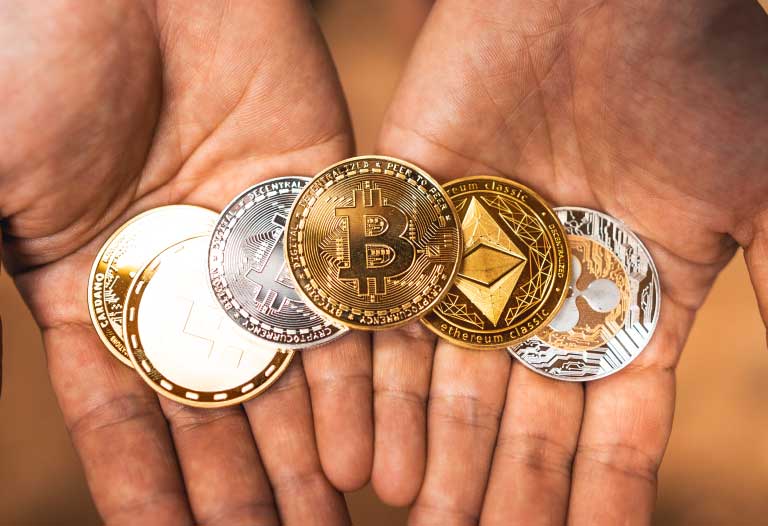
Cryptocurrency for Beginners: 7 helpful tips
Cryptocurrencies carry a high level of risk. We are aware that this statement is not breaking news. However, there are some guidelines you can follow to stay safe and make it through this “new wild west” known as the cryptocurrency market. In that regard, in this article, I will give you 7 helpful cryptocurrency tips.
This article’s main goal is not to teach newbies how to invest or to provide alpha information. The main goal of this article is to give you seven suggestions that, although they may seem basic, can be quite useful in helping to protect your cryptocurrencies.
So let’s get started without any further introductions.
1. Store your keys/seed phrase in a secure way
The first thing you need to do to start your journey in the cryptocurrency market is to
- First of all, choose a wallet
- Next, download it (always from their official site or your mobile store)
- Then, install it on your device
You must create an account following these actions. Additionally, it will provide you a list of twelve or twenty-four words if you choose a wallet where you will have custody of your funds. Those are sacred words. You might think I’m overreacting, but anyone who has those words will be able to access the money that belongs to that wallet.
Therefore, good storage practices include
- Ideally, write them down on more than one piece of paper
- Store them separately
- Never reveal them to anyone else
Your cryptocurrencies will always be your property if you stick to these easy steps.
2. Do not trust, verify
The cryptocurrency ecosystem is constantly flooding us with information. Therefore, a key point is to distinguish what is good information from what is not. Obviously, as in other specific fields, we have respectable people, speakers, and builders who would provide great information. But, we are getting involved with programmable money and that is a risky subject.
To be on the safe side, we should not trust and verify the information ourselves. Reading lite-papers or white-papers can be difficult and time-consuming at first. However, after doing it for a while you will get used to it and, in the meantime, you will build a solid knowledge base. In the end, it all comes down to not trusting and verifying yourself.

3. In stormy times, DCA can be useful
DCA means “Dollar Cost Average”. How can we apply this concept to cryptocurrencies? First, you must establish a time frame. You may specify that it happens every Monday, every first Monday of the month, or every two weeks, for example. The most crucial thing is to stick to the deadline you’ve established.
Then, when the time comes, you must purchase the same quantity—in this case, a specific amount of cryptocurrency—in terms of a FIAT currency. Hence, the following would be an appropriate example:
- Every Monday I will buy €20 in BTC
Every Monday, the twenty euros are purchased regardless of what happens to bitcoin and whether its price increases or decreases. It has shown out to be an strategy that outperforms nearly all traders. Keep in mind that the cryptocurrency you select for your DCA should be able to survive at least until the end of your plan.
4. Always, have a plan
If the DCA is not enough for your profile, or you decide to do it but with only a part of your capital, you should sit down and design a well-thought plan. Some of the things you should have in your plan are:
- A time frame in which you are willing to hold that crypto
- Take profit price
- Stop loss price
- Mount of losses you are willing to take
- Why you are buying that crypto
Before buying a new coin, get back to this list. If you are not able to give a proper answer to each point, I would recommend you avoid that purchase. Then, it will be a good idea to get a pen and a piece of paper and do not stop until you can give proper answers that satisfy yourself. After doing that, you are going to be closer to having a plan. The rest is just to know how you react to market avatars.
5. Diversify
Some traders, especially those coming from the traditional market, have vilified this advice. They are right when, for example, we have a part of our portfolio in BTC, another part in ETH, and the rest in some new projects. Then, those new projects make a 50% rise in just one week. Someone who is against diversification may say “if you had put everything in those new projects…”.
But, one principle we should always keep in mind is that with tomorrow’s paper, everyone knows what we should have done. However, let’s imagine that those new projects have some internal problems and their price drops rapidly. In that scenario, we will praise ourselves for having been wise enough to diversify.
In conclusion, diversifying simply means not putting all your money in the same project or crypto. When it all falls apart, you will see if you have diversified well and enough.

6. Do not hesitate to sell
I have talked about plans. When users are new to this ecosystem, they may think that, when the time comes, they will not hesitate to press the sell button. But, with experience, those users will learn that it is not easy to press that button.
In bull market period, cryptocurrencies seem to be able to reach the moon, literally. On top of this, some niche groups, or is it better to say some people, may take offense if someone says that they are simply considering taking some profits. I know it sounds weird, but such things have happened once and will happen again, for sure.
Therefore, before purchasing a cryptocurrency, you should be aware of the price at which you will feel confident enough to realize a profit, or if you prefer, the time period after which you want to do so. And when it’s time to press the sell button, do so without hesitation.
7. Avoid getting caught by FOMO
The final tip could be the most difficult to follow. Everyone has been there. Many crypto users believe they are strong and informed enough to escape FOMO, however, even those who have spent years interacting with this ecosystem and are most prepared may fall to FOMO.
If you are unfamiliar with that term, it merely means “Fear of Missing Out.” The biggest examples on that issue are surges during a bull market when every candle is green and it seems that everyone is making tons of money. When you check Twitter and see that people are talking about their huge gains on a new cryptocurrency, you keep your will and resist giving in. However, when you check Telegram, you see that your crypto-friends are talking about that NFT collection that let them make a lot of money.
Then, when you feel like you were losing the party, you bought that cryptocurrency that was trending on Twitter and tried your luck with the NFT collection, which appeared to be the new “blue chip.” But when you find yourself serving as the exit liquidity for guys who were selling those projects elsewhere, reality will hit you hard.
Again, making a plan and following it is the greatest approach to preventing FOMO. Social media can be a source of extremely helpful information, but we must be clever enough to distinguish between those who are merely spreading information and those who are doing business.
Conclusion
I hope that newcomers to the cryptocurrency market find useful these 7 helpful crypto tips and, why not, they also act as a reminder that good practices build solid portfolios for those who have some experience in the industry.
This straightforward but essential advice will ensure that your cryptocurrencies are safe and that you succeed in this turbulent ecosystem. Unfortunately, there are some situations that are a constant threat, like market volatility, hacking, and rug-pulls, so it is best to be prepared to handle them.
Unregulated environments offer their users a fair amount of freedom and the potential for huge gains. However, such freedom also includes responsibility on our part, and those great potential rewards come with a similar degree of risk.
Being responsible, doing your own research, and only spend what you can afford to lose appears to be the key ingredients. You will learn about a world full of possibilities and freedom in the meantime. Welcome to the rabbit hole, and have fun digging into it.
